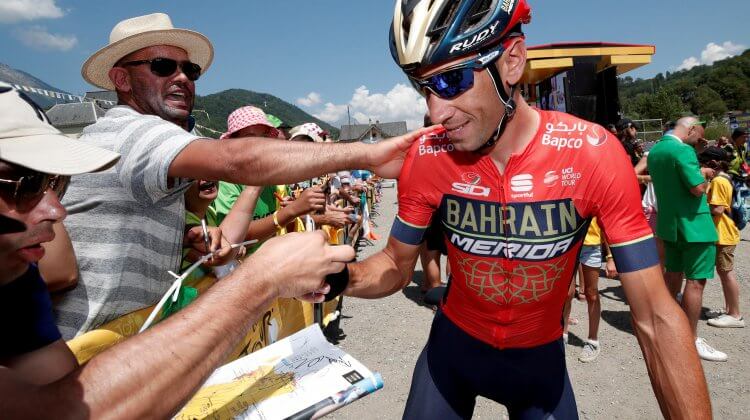
Is it possible to detoxify a major sport in the Age of Doping? Any realistic response to that question must acknowledge that “cleaning up” a sport has two dimensions: (1) preventing performance-enhancing drug (PED) use by athletes, and (2) convincing the sporting public that everything possible is being done to achieve this result and that real progress is being made. There is, in short, a difference between effective doping control and the appearance of effective doping control that is actually the product of skillful public relations. In the United States, the National Football League (NFL) has succeeded in neutralizing media interest in whatever doping NFL players may be engaged in. Major League Baseball, on the other hand, handled the steroid scandals of the 2000s badly and is still plagued by the doping issue, despite the rough tactics it has employed to get the information it wants about the behavior of an errant star like Alex Rodriguez.
Another example of public relations success in the doping wars is FIFA, which has not reported a single doping positive at the World Cup since Diego Maradona got caught using the stimulant ephedrine in 1994. FIFA’s chief medical officer, Jiri Dvorak, says all the right things and publishes in the British Journal of Sports Medicine – respectability incarnate. Like the managers of American football, the managers of global football have eluded doping controversies despite the financial scandals that have engulfed FIFA for years.
At the other end of the public relations spectrum is the International Cycling Union (UCI), which until 2013 had been under siege since the great Festina doping scandal that almost wrecked the 1998 Tour de France. The crucial question here is: What happened in 2013 to give professional cycling and the UCI a second lease on life? The answer is the collapse of Lance Armstrong and his athletic reputation, along with the related collapse of the UCI presidency held by Pat McQuaid. The 1998 scandal was followed by the doping-soaked Age of Armstrong. The Festina scandal could not bring reform, because the UCI president at that time, Hein Verbruggen, was an expediter rather than an opponent of doping. But in September 2013, Verbruggen’s protégé McQuaid was voted out of office and replaced by a reformer. This was the first time in history that a major international federation (IF) boss had been expelled from office.i And for the first time in history, anti-doping reformers were now in a position to do something about doping in the sport.
The winner of the 2014 Tour de France is Vincenzo Nibali, an Italian rider for the Astana Pro team that is owned by the sovereign wealth fund of Kazakhstan, one of the most corrupt countries on earth. “For us,” the head of the Kazakh central bank said, “the win of Vincenzo Nibali is not just a sports result, but also a contribution to the program of bringing foreign direct investment to Kazakhstan.” ii Astana Pro’s annual budget is $20,000,000. When asked point-black whether he is a doper, Nibali replied with the elliptical evasions that were a hallmark of cycling’s Golden Age of Doping. iii No one familiar with the relationship between money and doping will be encouraged by this information.
Nevertheless, if there is a consensus today, it is that professional cycling is cleaner than it has been in decades. The “biological passport” system that tracks the riders’ physiological markers makes many riders think twice about cheating. French riders fear their country’s anti-doping law. The French cycling expert Antoine Vayer, who calculates the riders’ power output in watts of energy, says the power numbers from the 2014 are finally back down in the “human” range.iv And Vayer sees a change in attitude among the young riders.
But not every informed observer is satisfied with the status quo. Christophe Bassons, the courageous French anti-doping icon of the 1990s, does not see the change in “mentality” that Vayer does. Bassons is a purist who wants to see every rider’s medical Therapeutic Use Exemptions (TUEs) on the Internet. v
Another purist who understands what is at stake is Anko Boelens, the Dutch team doctor for the Giant-Shmano team, who objects to the TUE granted the 2013 Tour de France champion Chris Froome on medical grounds. If you need to be treated with a glucocorticosteroid like Prednisone, he says, “you’re too sick to compete. Period.” The Movement for Credible Cycling (MPCC) is trying, he explains, “to eliminate the grey areas.” vi
Endnotes
- See Mark Johnson, “”Hoberman Q & A: Outlining corruption, doping collusion at the IOC, UCI,” VeloNews (January 4, 2013). [http://velonews.competitor.com/2013/01/analysis/hoberman-qa-outlining-corruption-doping-collusion-at-the-ioc-uci_270482]
- “Astana Win May Up Investment, Kazakh Central Banker Says,” Bloomberg Businessweek (July 28, 2014). [http://www.bloomberg.com/news/2014-07-27/astana-tour-win-may-boost-investment-kazakh-central-banker-says.html]
- “More Beautiful Than I Ever Imagined’,” New York Times (July 28, 2014).
- “Cycling is ‘winning the way on doping’, says expert” (July 24, 2014). [http://www.france24.com/en/20140724-cycling-doping-crusader-winning-antoine-vayer/]
- Bassons compares Team Sky and US Postal Service,” Cycling News (July 4, 2014). [http://www.cyclingnews.com/news/bassons-compares-team-sky-and-us-postal-service]
- “Team Sky: No medicine for regret,” cxyclingnews.com (June 23, 2014). [http://www.cyclingnews.com/features/team-sky-no-medicine-for-regret]
About the author
John Hoberman is the leading historian of anabolic steroid use and doping in sport. He is a professor at the University of Texas at Austin and the author of many books and articles on doping and sports. One of his most recent books, “Testosterone Dreams: Rejuvenation, Aphrodisia, Doping”, explored the history and commercial marketing of the hormone testosterone for the purposes of lifestyle and performance enhancement.